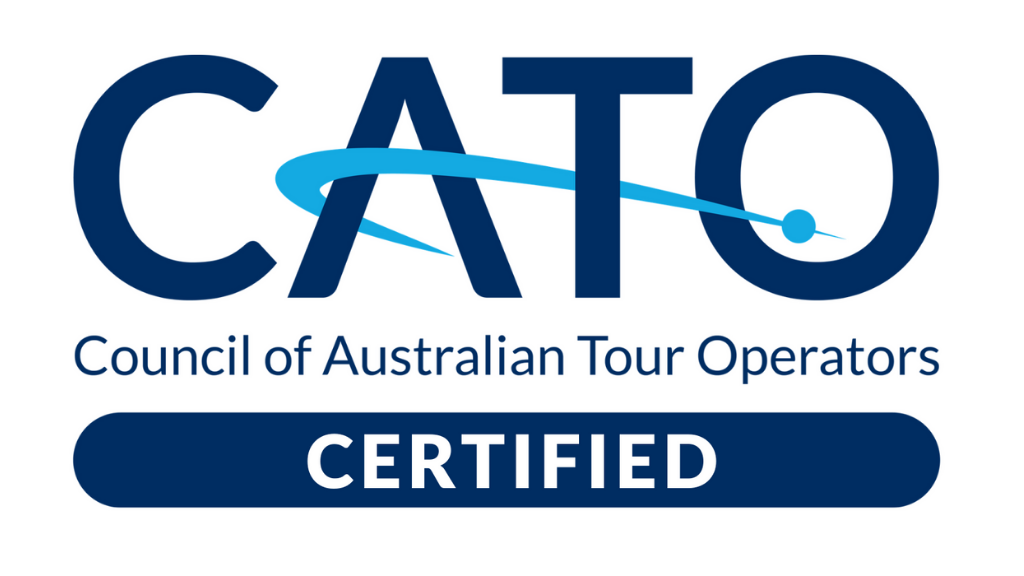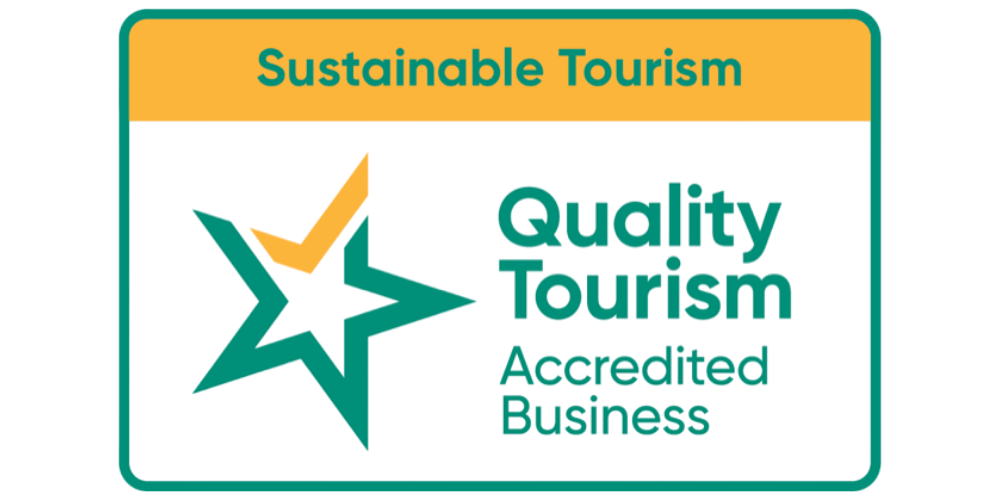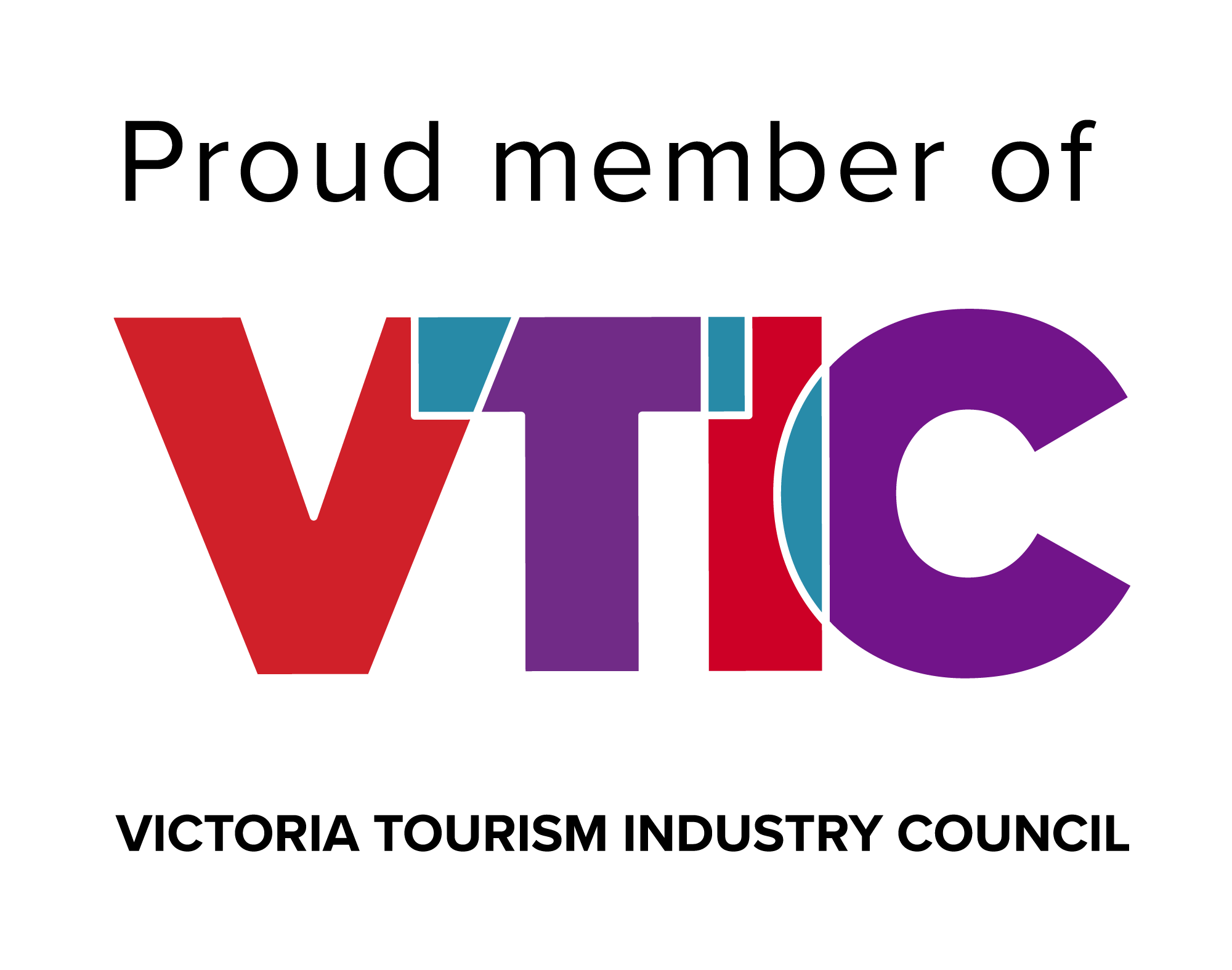
From Ger Fires to Gobi Suns | 14-Day Mongolia Discovery
📍 MONGOLIA | Guided | All Essentials ✅
Ger fires, big skies, slow roads. Cross the Gobi and steppe on a 14-day loop of dunes, gorges, monasteries and nomad life. Ger camps, a two-night family stay, camel bells at dawn, and a dusk search for Takhi wild horses.
Ulaanbaatar ⇄ Ulaanbaatar
Easy
Ages 12 +
200% CO₂ Offset
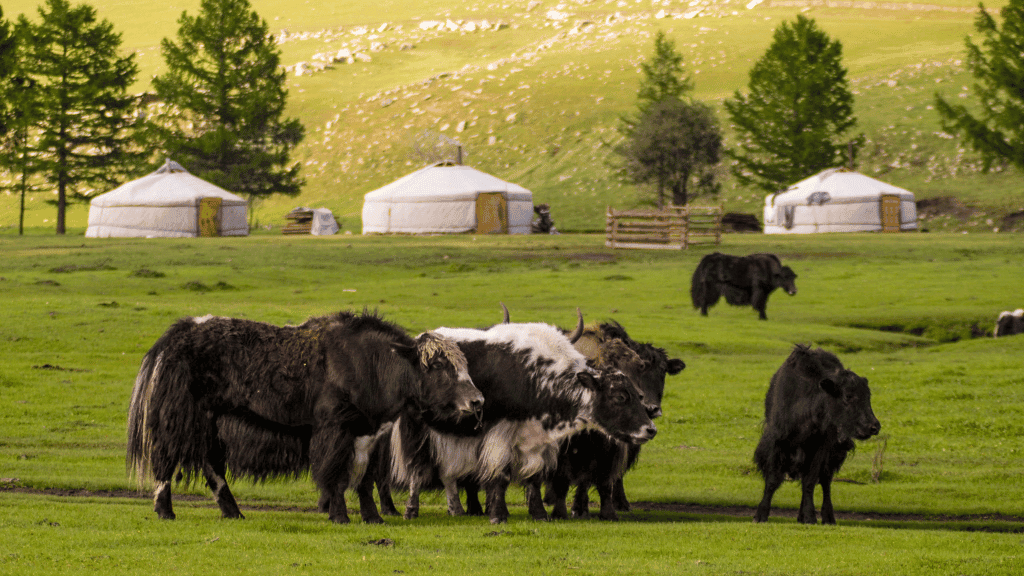
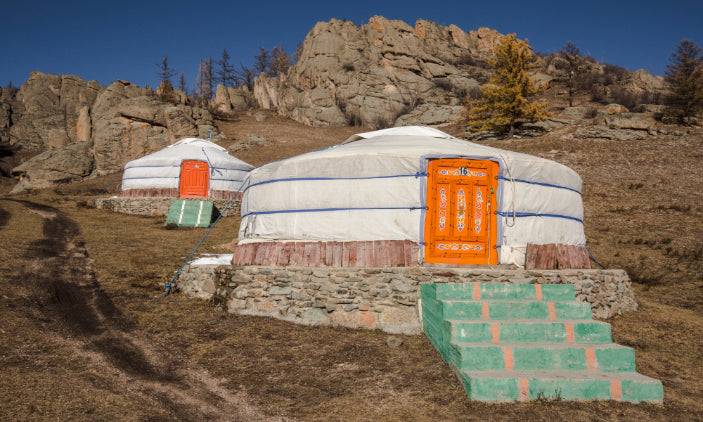
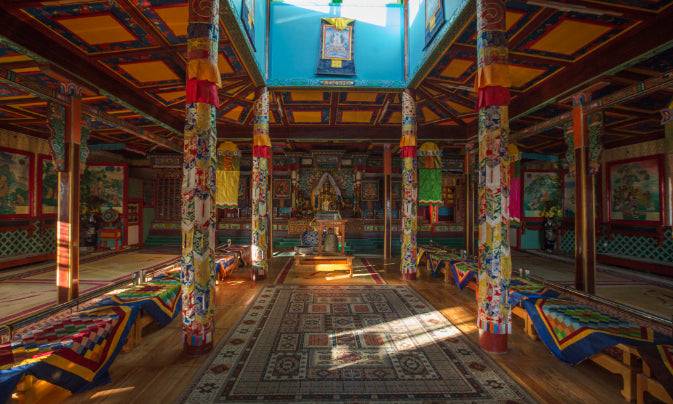
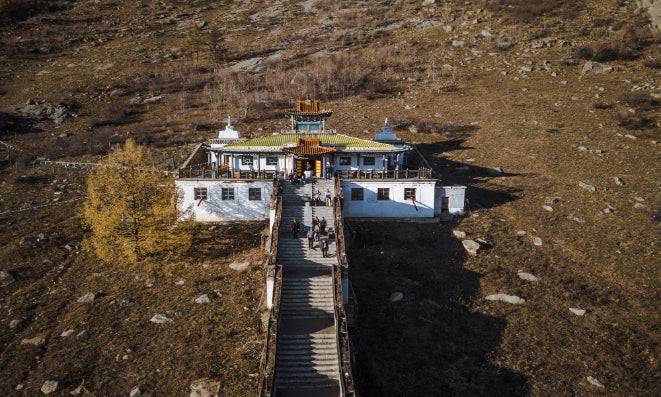
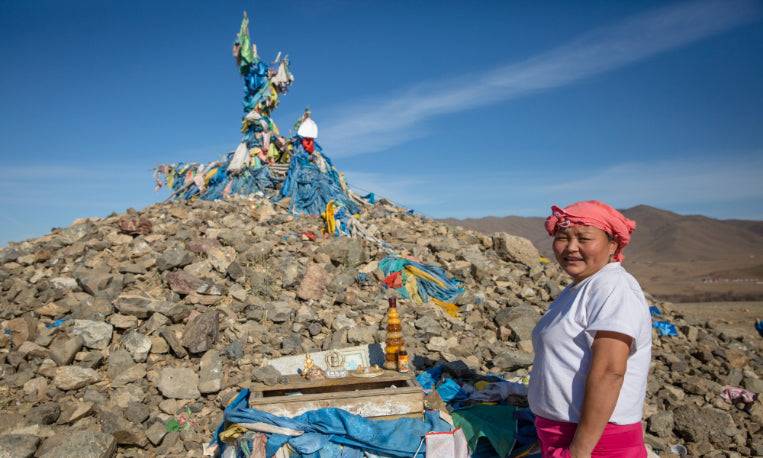


















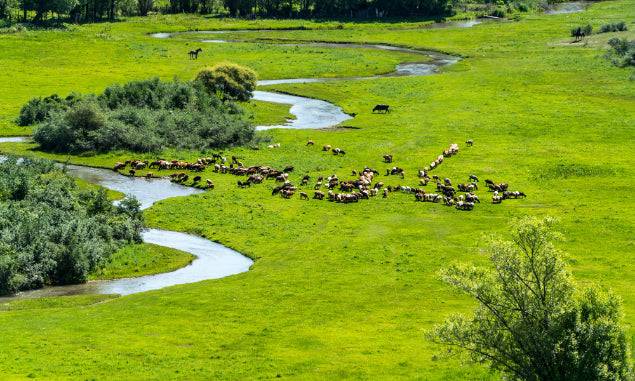


























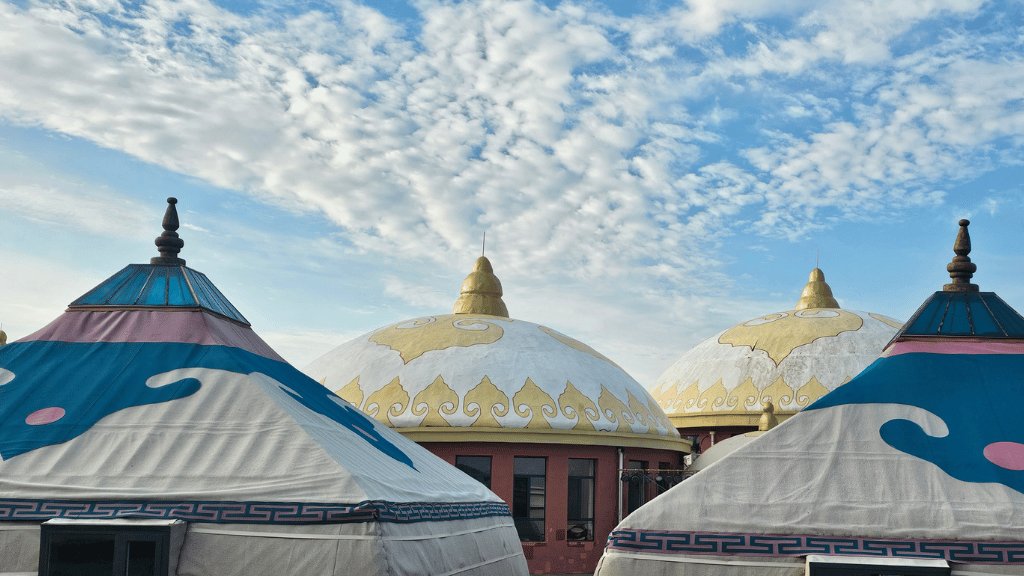







Tour Overview
Ger Fires to Gobi Suns: 14-Day Mongolia Discovery Sleep in nomad gers under star-drunk skies, milk yaks at dawn, climb singing dunes, and watch wild takhi horses thunder across the steppe – the classic Mongolian journey, fully supported and 200% carbon offset.
Tour at a Glance
- Duration: 14 days / 13 nights
- Group size: Max 14, average 12 guests
- Age & fitness: 12+, moderate – short hikes (1–4 hrs), long scenic drives, some rough 4×4 roads
- Start / End: Ulaanbaatar (UBN)
- Accommodation: Comfort hotel in Ulaanbaatar + authentic tourist ger camps (twin-share, wood-stove heated)
- Sustainability: 200% CO₂ offset + direct income to every herder family we stay with
What’s Included
- 13 nights twin-share (2–3 nights hotel UB + 10–11 nights best ger camps)
- Daily breakfast + 11 lunches + 10 dinners (fresh dairy, khorkhog BBQ, buuz, airag in season)
- Private 4×4 Japanese/Russian vans with expert drivers
- Full-time Mongolian guide + local nomadic hosts
- All national park & museum entrance fees
- Arrival & departure airport transfers
- Evening traditional performance & farewell dinner
Key Experiences on Every Departure
- Gandan Monastery & National Museum (Ulaanbaatar)
- Ger-building lesson & archery with nomads
- Yolyn Am ice canyon hike (Gobi)
- Sunset climb on Khongoryn Els “singing” dunes
- Flaming Cliffs (Bayanzag) dinosaur site
- Multi-day immersive stay with a herding family (milking, cheese-making, felt crafts)
- Ancient capital Karakorum & Erdene Zuu Monastery
- Twilight takhi (Przewalski’s horse) spotting in Khustai National Park
Not Included
- International flights
- Travel insurance (mandatory – must cover remote evacuation)
- Visa/e-visa
- Meals in Ulaanbaatar on Days 1 & 14 (allow USD 300–500 total)
- Optional horse or camel rides
- Tips (suggested USD 8–12/day total, pooled)
Day-by-Day Itinerary
- Day 1 Ulaanbaatar arrival & welcome walk
- Day 2 City highlights + Chinggis Khaan statue
- Day 3 Baga Gazriin Chuluu granite formations
- Day 4–5 Deep Gobi – Yolyn Am ice gorge & nomadic skills day
- Day 6 Khongoryn Els singing dunes
- Day 7 Flaming Cliffs sunset
- Day 8 Ongiin Khiid ruins
- Days 9–10 Immersive steppe homestay – herding, dairy, family life
- Day 11 Karakorum & Erdene Zuu Monastery
- Day 12 Khustai NP – wild takhi horses
- Day 13 Return Ulaanbaatar – cultural show & farewell dinner
- Day 14 Departure
Essential Packing
- Warm sleeping bag liner (gers can be cold at night)
- Good walking boots + sandals
- Layering system (daytime 15–30 °C, night near 0 °C)
- Binoculars & head-torch
- Reusable water bottle (we purify all drinking water)
Ready for the world’s last great nomadic culture – experienced the right way? Zero Trace Tours’ Mongolia departures are tiny and vanish fast. Book your ger under the Milky Way today!


Open | Live Dates & Availability
Tour Itinerary
Days 1–2 | Ulaanbaatar Arrival, City Sights & G for Good Café
Day 1 — Ulaanbaatar
Arrive any time. No planned activities until the evening Welcome Moment—meet your CEO and group, run through the plan, and (optionally) head out for a casual first dinner. Check the lobby notice or reception for the official meet-up time/place.
Stay: J Hotel (or similar) — Hotel
Included meals: None
Day 2 — Ulaanbaatar
Free day to explore the capital. Optional morning city tour: Gandan Monastery, Bogd Khan Palace, Zaisan Hill (city panorama). Afterwards, visit No Limits Café (G for Good) for coffee/tea/snacks prepared and served by local youth with Down syndrome and their mothers—an uplifting community stop that expands opportunities and awareness. Afternoon free time for museums, shopping, or a Chinggis beer.
Stay: J Hotel (or similar) — Hotel
Included meals: Breakfast
Optional activity: Ulaanbaatar City Tour (Gandan, Bogd Khan, Zaisan)
Days 3–4 | Middle Gobi Granite & Yolyn Am Ice Gorge
Day 3 — Ulaanbaatar → Baga Gazriin Chuluu (Middle Gobi)
Leave the capital for Dundgovi (Middle Gobi), stopping at the Choir Monastery ruins—once a major religious centre, destroyed during 1930s purges and now protected. Continue to your first ger camp near Mandalgovi. Typical gers have 2 beds, mattresses/linens/extra blankets, a central stove, and a small table/chairs.
Transport: Private vehicle Ulaanbaatar → Baga Gazriin Chuluu (~7h)
Stay: Bayan Bulag Ger Camp (or similar) — Ger
Included meals: Breakfast | Lunch | Dinner
Included visit: Choir Monastery (Mandalgovi)
Day 4 — Baga Gazriin Chuluu → Yolyn Am (Gurvan Saikhan NP)
Travel to Yolyn Am, a narrow gorge famed for lingering ice even in summer—warm layers and sturdy footwear recommended. Superb walking amid the Gurvan Saikhan mountains and a first real taste of Gobi landscapes.
Transport: Private vehicle Baga Gazriin Chuluu → Yolyn Am (~7h)
Stay: Khan Bogd Ger Camp (or similar) — Ger
Included meals: Breakfast | Lunch | Dinner
Days 5–6 | Singing Sands & Camel Country
Day 5 — Yolyn Am → Khongoryn Els
Drive into the heart of the Gobi’s dune belt at Khongoryn Els. En route, stop at the Yolyn Am Nature Museum—small but fascinating—with displays of local flora/fauna, dinosaur eggs and bones, stuffed birds, and a snow leopard specimen. Afternoon free time at the dunes: visit a local family, scramble up sand ridges, or try a camel ride.
Transport: Private vehicle Yolyn Am → Khongoryn Els (~5h)
Stay: Gobi Anar Ger Camp (or similar) — Ger
Included meals: Breakfast | Lunch | Dinner
Included visit: Yolyn Am Nature Museum (approx 30 min)
Free time: Khongoryn Els (family visit, dunes, camel riding—own expense)
Day 6 — Khongoryn Els
Immerse in the “singing sands”—the region’s largest dunes whose shifting slopes create a low, musical hum. Morning visit to the main dune field, then meet a nomadic camel-herding family. Optional hikes along additional dune lines and the chance to ride a camel.
Stay: Gobi Anar Ger Camp (or similar) — Ger
Included meals: Breakfast | Lunch | Dinner
Included visit: Khongoryn Els Sand Dunes (approx 2h)
Days 7–8 | Flaming Cliffs to River Monasteries
Day 7 — Khongoryn Els → Bayanzag (Flaming Cliffs)
Travel to Bayanzag, the famed Flaming Cliffs—a world-renowned fossil site where dinosaur bones and eggs were discovered. Wander red-sandstone canyons and terraces glowing in late light; it’s a spectacular natural amphitheatre for an unhurried explore.
Stay: Gobi Tour Ger Camp (or similar) — Ger
Included meals: Breakfast | Lunch | Dinner
Included visit: Flaming Cliffs walk
Day 8 — Bayanzag → Ongiin Khiid (via Delger Khangai area)
Cross western Gobi country toward the Delger Khangai Mountains to visit the river-valley ruins of Ongiin Khiid and Hoshuu monasteries—once important religious centres before their destruction under Communist rule. Learn the complex history and imagine the scale of the 17th-century temple complex that once housed 1,000+ monks.
Transport: Private vehicle Bayanzag → Ongiin Khiid (~5h)
Stay: Secret of Ongi Monastery (or similar) — Monastery
Included meals: Breakfast | Lunch | Dinner
Included visit: Ongiin Khiid & Hoshuu Monasteries (approx 1h)
Days 9–10 | Steppe Life Immersion with a Nomadic Family
Day 9 — Ongiin Khiid → Nomad Camp (Steppe Homestay)
Leave the Gobi behind and roll northwest into the Mongolian grasslands. Arrive to a two-night stay with a local nomadic family—an authentic window into life on the steppe where herders still follow ancestral routes. Settle in, then share a traditional dinner with your hosts (Mongolian barbecue is a highlight). Note: Space can be very basic with minimal or no facilities; if the family can’t host the full group, we’ll camp nearby (gear provided).
Transport: Private vehicle Ongiin Khiid → Nomad Camp (6–7h)
Stay: Nomadic Family Stay (or similar) — Homestay
Included meals: Breakfast | Lunch | Dinner
Day 10 — Nomad Camp (Full Day with Hosts)
A full day to learn the rhythms of nomadic life. Opt to join in milking and fresh-dairy prep, try your hand at basic horse handling, and—if in season—sample airag (fermented mare’s milk). Or simply relax, soak up steppe silence, and connect with your hosts.
Free time: Local activities with the family or downtime at camp
Stay: Nomadic Family Stay (or similar) — Homestay
Included meals: Breakfast | Lunch | Dinner
Days 11–12 | Ancient Capitals & Wild Horses
Day 11 — Nomad Camp → Kharkhorin (Karakorum)
Drive to Kharkhorin, site of Mongolia’s ancient capital. Visit Erdene Zuu Monastery—Mongolia’s first centre of Lama Buddhism, once 62 temples strong with 1,000+ monks, largely destroyed in the 1930s and now slowly restored. Stop at the Karakorum Museum to trace 13th–14th century artefacts and the city’s rise under the Mongol Empire.
Transport: Private vehicle Nomad Camp → Kharkhorin (~6h)
Stay: Munkhtenger Ger Camp (or similar) — Ger
Included meals: Breakfast | Lunch | Dinner
Included visits: Erdene Zuu Monastery (≈1h); Karakorum Museum
Day 12 — Kharkhorin → Khustai National Park
Travel to Khustai National Park (Khustain Nuruu), home of the Takhi—the world’s last truly wild horses. Evening light is prime time to scan the hills for small herds, descendants of a global reintroduction effort after they vanished from the wild.
Transport: Private vehicle Kharkhorin → Khustai NP (~6h)
Stay: Moltsog Ger Camp (or similar) — Ger
Included meals: Breakfast | Lunch | Dinner
Included visit: Khustai National Park (wild-horse viewing)
Days 13–14 | Capital Return, Culture & Farewell
Day 13 — Khustai National Park → Ulaanbaatar
Return to the capital for last-minute sightseeing and a relaxed afternoon. Browse museums or markets, then opt for a Mongolian Cultural Show in the evening—an excellent showcase of dance, traditional music, throat singing, and contortion.
Transport: Private vehicle Khustai NP → Ulaanbaatar (~3h)
Free time (afternoon): Explore more of the city—souvenirs, galleries, or a rooftop view
Optional activity: Mongolian Cultural Show (approx 30,000 MNT pp)
Stay: J Hotel (or similar) — Hotel
Included meals: Breakfast | Lunch
Day 14 — Ulaanbaatar
Depart at any time.
Included meals: Breakfast
Key Tour Info
Route Map

Food & Accommodation
Where You’ll Sleep
- Nights 1–2 — Ulaanbaatar: Hotel (e.g., J Hotel or similar); central location, private rooms, Wi-Fi.
- Night 3 — Baga Gazriin Chuluu (Middle Gobi): Ger camp; twin-share gers with beds/linens, shared facilities, central stove.
- Night 4 — Yolyn Am (Gurvan Saikhan NP): Ger camp; simple gers, shared bathrooms; nights can be cold—bring layers.
- Nights 5–6 — Khongoryn Els: Ger camp (Gobi Anar or similar); near dune fields; shared facilities; limited power for charging.
- Night 7 — Bayanzag (Flaming Cliffs): Ger camp (Gobi Tour or similar); classic red-sandstone sunset spot; shared facilities.
- Night 8 — Ongiin Khiid (Delger Khangai area): Monastery-adjacent ger camp (Secret of Ongi or similar); serene riverside setting; shared facilities.
- Nights 9–10 — Nomad Camp (Steppe Homestay): Family homestay in gers (very basic; minimal or no facilities). If the family cannot host the whole group, we’ll camp nearby—all camping gear provided.
- Night 11 — Kharkhorin (Karakorum): Ger camp (Munkhtenger or similar); close to Erdene Zuu and local museum.
- Night 12 — Khustai National Park: Ger camp (Moltsog or similar); dusk/dawn wildlife viewing; shared facilities.
- Night 13 — Ulaanbaatar: Hotel (as Night 1–2).
Rooming & facilities: Standard small-group set-up. Ger camps are simple and communal with shared bathrooms (occasionally no showers); hot water and electricity can be limited or scheduled. Pack a headlamp, power bank, and warm sleep layers for cooler nights.
What You’ll Eat
Style: Hotel breakfasts on city nights; on the road, most meals are provided at ger camps or local eateries. Expect hearty, home-style Mongolian dishes (dumplings, noodles, stews), with fresh dairy at the nomad stay. Tea is ubiquitous; airag (fermented mare’s milk) may be offered in season.
Dietaries: Vegetarian and basic dietary needs are usually accommodated with advance notice; options are limited in remote areas—bring a few favourite snacks.
Hydration: Bottled/treated water provided or available to purchase; carry 2 × 1 L bottles or a 2–3 L bladder on longer days.
Included meals (typical): 13 breakfasts, 11 lunches, 10 dinners.
Included meal highlights (by segment)
- Ulaanbaatar (N1–2 & N13): Hotel breakfasts; dinners at own choice (city cafés and barbecue spots nearby).
- Middle Gobi → Yolyn Am (N3–4): Camp dinners with warming soups/stews; simple picnic lunches on drive/hike days.
- Khongoryn Els (N5–6): Camp meals; optional camel-herder visit with fresh dairy tastings.
- Bayanzag → Ongiin Khiid (N7–8): Camp dinners; sunset snacks at Flaming Cliffs are a win (bring a thermos).
- Nomad Homestay (N9–10): Traditional family meals; hands-on dairy prep; tea served generously.
- Kharkhorin (N11): Camp dinner after monastery/museum visits.
- Khustai NP (N12): Early dusk wildlife outing—dinner at camp on return.
Good to know (food & drink)
- Remote camps may rotate menus—simple, filling, repeatable.
- Coffee is improving, tea is king. Bring your preferred instant/ground if particular.
- Re-usable cutlery/cup and snack stash (nuts, bars, electrolytes) are handy for long drives.
What's Included & What's Not
✅ What’s Included
- Small-group trip (Classic | Standard): max 14 (avg 12); CEO throughout with specialist local guides where it adds value.
- Duration & route: 14 days, Ulaanbaatar ↔ Ulaanbaatar (round trip).
- Stays: Hotels (3 nts), ger camps (8 nts; shared facilities), nomadic family stay or tent camping (2 nts; multi-share, very basic).
- Meals: 13 breakfasts, 11 lunches, 10 dinners.
- Transport: Private van, 4×4, walking—all on-trip transport between destinations and to/from included activities.
- Guided & Included Highlights:Ulaanbaatar orientation time; Soviet-era architecture notesChoir Monastery visit (en route south)Baga Gazriin Chuluu granite outcropsYolyn Am (Gurvan Saikhan) gorge walks + small nature museumGobi Desert stayKhongoryn Els sand dunes (optional camel ride available)Bayanzag (Flaming Cliffs) visitOngiin Khiid monastery ruinsNomad camp stay (2 nts): daily herding rhythms, fresh dairy, seasonal airagKarakorum (Kharkhorin): Erdene Zuu Monastery & monument/museum entryKhustai National Park: dusk search for Takhi (Przewalski’s horse)
- G for Good Moment: Cafe No Limits visit (Ulaanbaatar).
- Trip operations & support: CEO assistance, local office support, and 24/7 emergency contacts.
🚫 What’s Not Included
- International flights to/from Ulaanbaatar.
- Travel insurance (mandatory): must include medical, evacuation & repatriation (min USD 200,000).
- Visas, vaccinations, and entry/exit fees (vary by nationality).
- Meals and drinks not listed above; personal snacks.
- Optional activities and entrance fees not specified as included (e.g., camel riding, cultural shows, city tours on free time).
- Tipping for CEO, drivers, local guides, and service staff (customary; guidelines provided on tour).
- Arrival/departure transfers (available on request; otherwise DIY by taxi/rideshare).
- Single room supplement (“My Own Room”), where available.
- Personal expenses: laundry, phone/SIM/Wi-Fi upgrades, souvenirs, toiletries, extra gear (e.g., sleeping bag liner, headlamp).
- Baggage fees/overweight charges if applicable on any flights you book to/from Mongolia.
Weather Expectations
Weather Expectations
Big picture: Continental extremes meet desert dryness. Expect wide swings between hot, sunny days on the Gobi/steppe and cold nights, especially in gorges or at altitude. Winds can kick up dust/sand, UV is strong, and rainfall is generally low but can arrive in short summer bursts. Layer up and plan for sun, wind, and chill.
By Region (what it feels like)
- Ulaanbaatar (1,300 m | continental)May–Jun: cool–mild days 10–22 °C; cold nights 0–8 °C.Jul–Aug: warm 20–27 °C, occasional storms; nights 10–15 °C.Sep: mild days 12–20 °C; crisp nights 2–8 °C.
- Middle Gobi / Baga Gazriin Chuluu (steppe–desert)Big diurnals. Day 18–32 °C (Jul–Aug peak), nights 5–15 °C. Dry air; wind common.
- Yolyn Am (Gurvan Saikhan NP, gorge; cooler microclimate)Shaded, wind-funneled. Even in summer, mornings can feel near freezing.Day 8–20 °C; nights −2–8 °C possible; lingering ice patches in the gorge.
- Khongoryn Els (Gobi dune belt)Day 22–35 °C (peak heat Jul–Aug); nights 8–18 °C.Afternoon winds drive blowing sand; UV fierce; humidity very low.
- Bayanzag (Flaming Cliffs)Day 20–32 °C, nights 5–15 °C. Sunset brings a rapid temp drop; breezy edges on the escarpments.
- Ongiin Khiid / Delger Khangai (river valley)A touch milder than open desert. Day 18–28 °C, nights 5–12 °C. Occasional showers possible mid-summer.
- Nomad Camp (open steppe; variable by site)Day 18–30 °C, nights 5–12 °C. Wind exposure is high; shelters can be drafty.
- Kharkhorin (Karakorum)Day 16–26 °C, nights 4–10 °C. Changeable; brief showers possible.
- Khustai National ParkDay 16–28 °C, nights 4–12 °C. Best Takhi viewing often at cooler dusk/dawn.
Quick Month-by-Month (impact on the trip)
- May: Crisp, dry, windy. Cool days, cold nights—best for clear views, pack serious layers.
- Jun: Warming; still breezy; nights cool. Wildflowers on steppe; great hiking temps.
- Jul–Aug: Hottest (Gobi can exceed 35 °C). Short, sharp storms possible; strongest UV; dunes best at early/late hours.
- Sep: Cooling again; stable skies, golden steppe grasses, cold mornings/evenings.
Sun, Wind, and Rain Notes
- UV & dryness: High UV everywhere—hat, SPF 50, sunglasses, lip balm vital. Low humidity = drink more water than you think.
- Wind & dust: Expect gusts on drives and dunes; buff/face wrap + glasses help.
- Rain: Generally light/brief, mainly Jul–Aug; roads can get muddy after a storm.
- Cold snaps: Gorges and higher ground can dip near or below 0 °C overnight even in peak season.
Packing cues tied to weather
- Layers rule: base + fleece/insulated mid + wind/waterproof shell.
- Warm accessories: beanie, gloves for Yolyn Am mornings and windy sunsets.
- Footing: closed-toe hiking shoes with grip; gaiters optional for sand.
- Hydration & skin: 2×1 L bottles or 2–3 L bladder; moisturiser and saline eye drops help in desert air.
- Storm-smart: light rain shell and a dry bag for daypacks during summer squalls.
⭐ Reviews
We are working to bring live on-site reviews for this tour
To View Reviews, Click Button Below
What To Pack
What to Pack
Bags & Carry Set-up
- 1 soft-sided main bag (60–70L max): duffel or backpack packs best in vans/gers.
- Daypack (20–30L): hip belt + rain cover; fits water, layers, camera.
- Small neck wallet / cross-body for passport/cards; luggage locks.
Clothing — Steppe, Desert & Cool Nights
- Base layers: 4–6 quick-dry tees/tops, 1–2 long-sleeves (sun/bugs).
- Mids: fleece or light insulated jacket; 1–2 casual jumpers.
- Warmth: beanie, buff/scarf, thin gloves; packable puffy (nights can be near-freezing, even in summer).
- Shell: lightweight waterproof/windproof jacket.
- Bottoms: 1–2 quick-dry trousers, 1–2 shorts; thermal leggings for cold nights.
- Active wear: 1 fast-dry set for hikes (Yolyn Am, dunes).
- Sleepwear: for warm & cold rooms.
- Modesty layer for monasteries (shoulders/knees covered).
Footwear
- Hiking shoes/boots (broken-in; good tread for gravel/sand).
- Comfortable walking shoes (town days).
- Sandals/flip-flops (showers/ger camps).
Sun, Wind & Dust Basics
- Sun hat/cap, high-UV sunglasses, SPF 50 sunscreen + lip balm.
- Neck gaiter/buff for dust on Gobi drives; microfibre cloth for camera/lenses.
- Dry sacks/zip bags for dust-proofing and sudden showers.
Health & Hygiene Kit (bring what you personally use)
- Personal meds + copies of scripts; compact first-aid (blister care, antiseptic).
- Rehydration salts, antihistamine, anti-diarrhoeal, pain reliever.
- Hand sanitiser & antibacterial wipes; small soap/shampoo bars.
- Insect repellent (picaridin/DEET) for summer months.
- Water system: reusable bottle (1–2 L); optional filter/purification tabs.
- Tissues / TP roll for remote stops.
- Moisturiser (dry steppe air), saline eye drops (dust).
Docs & Money
- Passport (6+ months validity) + 2–3 photocopies.
- Travel insurance certificate & emergency numbers (printed + digital).
- Visas/vax proof as required.
- Cards + some USD cash (clean notes) + local MNT after arrival; split across two stashes.
Electronics
- Phone + power bank (10,000–20,000 mAh).
- Headlamp (night toilet runs in camps).
- Universal adapter (220V; Type C/E/F common).
- Camera/GoPro + spare batteries/memory (cold drains batteries faster).
- E-reader/earplugs/eye mask for long drives and shared gers.
Laundry & On-the-Go Care
- Travel detergent (biodegradable), peg line or a few clips.
- Stain stick, lint roller, mini sewing kit.
Nice-to-Haves (that become must-haves)
- Neck pillow & thin travel blanket/sarong (long drive days).
- Collapsible day tote (market runs, hot springs).
- Small binoculars (eagles, gazelles, Takhi).
- Reusable cutlery/cup (picnics, tea stops).
- Tiny gifts from home (stickers/pins) for nomad family—optional, respectful.
Do Not Forget — Mongolia-Specific
- Ger etiquette: slip-ons for quick in/out; move clockwise, don’t lean on ger poles.
- Cold-snap ready: even in summer, pack a real warm layer + gloves/beanie.
- Dust plan: phone/camera protection, lens wipes, buff.
- Headlamp + spare batteries (some camps cut power overnight).
Leave Behind (or limit)
- Bulky hard-shell suitcases, high heels, multiple jeans, hair dryers (power and space limited).
- Excess jewellery/valuables—keep it simple and use hotel/ger camp safes when available.
Local Insights
Local Insights
Big-picture vibe: Big sky, bigger hospitality. You’ll move from capital bustle to ger-circle warmth, where tea arrives before questions and stars feel close enough to touch.
Respect & ger etiquette
- Ask before photos of people, monks, or inside gers/monasteries.
- Don’t step on the ger threshold; enter right foot first, move clockwise.
- Accept tea/snacks with both hands; sample politely even if just a sip.
- Keep feet off the stove/hearth and avoid pointing soles at people or shrines.
- Horses are pride: don’t touch a horse’s head without permission.
Useful phrases (Mongolian)
- Hello: Sain bainuu? (Сайн байна уу?)
- Thank you: Bayarlalaa (Баярлалаа)
- Please: Khusie (Хүсье) / Yariyl (polite ask)
- Yes/No: Tiim / Ügüi (Тийм / Үгүй)
- Excuse me/Sorry: Uuchlaarai (Уучлаарай)
- Delicious: Amttai (Амттай)
- Where’s the toilet?: Jorlon khaana ve? (Жорлон хаана вэ?)
Money & paying
- Tögrög (MNT) is king outside Ulaanbaatar; carry small notes for family stays and kiosks.
- ATMs and cards work in UB; expect cash only most elsewhere.
- Withdraw in UB and split cash between bags.
Tipping (tour context)
- Not traditional day-to-day, but on small-group trips it’s appreciated:CEO/guide: ~USD $5–10 pp/dayDriver(s): ~USD $3–6 pp/dayNomad hosts: small cash gift or buy dairy/handicrafts direct.
Safety quick-takes
- Roads are rough/remote—belt up, expect long stretches without services.
- Camp dogs are common—don’t run; let the host handle them.
- Nights are dark: headlamp and buddy system help on bathroom runs.
Transport quirks
- Drives can be 6–7 hours; dust and washboards are normal—neck buff helps.
- Seat rotation keeps it fair; toilet breaks are “nature style” (bring TP & zip bag).
- Weather can reroute plans; flexibility = happy traveller.
Connectivity & power
- Patchy outside UB; local SIMs help in towns, not the deep steppe.
- Ger camps often run limited-hour power; bring a power bank and charge when you can.
Photography & drones
- Always ask first; some monasteries charge a small camera fee.
- Drones may be restricted near monasteries, parks, and wildlife—fly only with permission.
Festivals & timing
- Naadam (mid-July): wrestling, archery, horse racing—book early if you want to attend.
- Monasteries may pause for services; go with the flow and keep voices low.
Nature etiquette
- Stay on established tracks; steppe soils and dune plants are fragile.
- Pack out all rubbish; use reef-safe/scent-light products around waterways.
- Watch wildlife quietly; no feeding, chasing, or close approach.
Sustainable choices
- Buy direct from families (felt crafts, dairy) and pay fair prices.
- Refill bottles where possible; carry a filter or tabs.
- Choose local eats and shared vehicles where offered.
Micro-moments to chase
- Yolyn Am: dawn air and lingering ice—bring gloves for the first 15 minutes.
- Khongoryn Els: dune climb at sunrise or sunset to hear the sands “sing.”
- Bayanzag: arrive before golden hour—reds go cinematic after wind drops.
- Erdene Zuu: if chanting is on, stand quietly at the back; it’s spellbinding.
- Khustai NP: best chance for Takhi is dusk—binoculars pay off.
CO₂ Footprint Report
CO₂ Footprint
Results Summary (Topline)
- Estimated per guest (14 days): ~4.0 tCO₂e
- Estimated per tour (assumed 12 guests): ~48 tCO₂e
- Counter-impact applied: 200% (targeting ~8.0 tCO₂e per guest)
- Method note: DEFRA-aligned factors with Well-to-Tank (WTT) and Radiative Forcing (RF) = 1.9 for aviation; +10% uncertainty uplift applied. Conservative throughout.
Purpose
Provide a clear, conservative estimate of the greenhouse-gas footprint for this Mongolia overland itinerary, plus the scope of the 200% counter-impact.
Tour Header
- Tour: From Ger Fires to Gobi Suns | 14-Day Mongolia Discovery
- Route: Ulaanbaatar ↔ Ulaanbaatar (round trip)
- Style: Small-group Classic | Standard service level
Scope & Boundaries (what’s counted)
- Guest travel to/from tour: Single official feeder hub → Ulaanbaatar (start/end) ↔ hub (open-jaw not applicable).
- On-tour transport: Private van/4×4 and walking.
- Accommodation: Hotels + ger camps + family homestay (HCMI-style proxies).
- Meals: All meals across 14 days (included + at-own-expense) via a conservative per-meal factor.
- Activities: Small allowance for higher-impact days (e.g., cultural park access/short local rides).
- Excluded: Beyond-hub long-haul not in the feeder model; shopping; extraordinary add-ons not typical for this route.
Feeder Hub — Single Origin City
Singapore (SIN) chosen for consistent reporting on this departure.
Emission Factors & Conservative Defaults
- Aviation (economy, short/med-haul effective): base ~0.158 kgCO₂e/pax-km, then × RF 1.9 + WTT → ~0.30 kgCO₂e/pax-km used.
- Ground (van/4×4/bus mix): ~0.09 kgCO₂e/pax-km (WTT incl.).
- Accommodation proxies: Hotel/ger ~12 kgCO₂e/night.
- Meals: ~2.5 kgCO₂e per meal.
- Activities allowance: ~20 kgCO₂e per guest (one-off).
Activity Data (applied)
- Aviation (hub + return): SIN ↔ Ulaanbaatar ~10,400 km total.
- Ground (combined overland): ~2,100 km (Ulaanbaatar → Middle Gobi → Yolyn Am → Khongoryn Els → Bayanzag → Ongiin Khiid → Nomad Camp (2N) → Kharkhorin → Khustai NP → Ulaanbaatar).
- Nights: 13 (3 hotel, 8 ger camps, 2 family stay/camp).
- Meals: ~42 (14×3).
- Activities: Small one-off allowance (see above).
Results — Per Guest (rounded)
- Aviation (~10,400 km; RF+WTT): ~3.12 tCO₂e
- Ground/4×4 (~2,100 km): ~0.19 tCO₂e
- Accommodation (13 nights): ~0.16 tCO₂e
- Meals (~42): ~0.11 tCO₂e
- Activities allowance: ~0.02 tCO₂e
- Subtotal: ~3.59 tCO₂e
- +10% uncertainty uplift: ~3.95 tCO₂e
- Rounded for communication: ~4.0 tCO₂e per guest
Results — Per Tour (assumed 12 guests)
- Estimated total: ~48 tCO₂e
Assumptions (key)
- Single-hub model fixed to SIN; other hubs (e.g., HKG/ICN) materially shift aviation.
- Ground factor set conservatively for van/4×4 use and steppe/desert driving.
- All meals counted (included + own-expense) to avoid underestimation.
- One activities allowance included for small local impacts.
- +10% uplift covers variability (weather reroutes, vehicle types, load factors).
Versioning
- Method: Zero Trace Standard v1.9 (DEFRA-aligned; WTT included; RF 1.9 for aviation).
- Date: 14 October 2025.
- Preparer: Zero Trace (marketplace methodology; not the tour operator).
Helpful Travel Tools
Save time planning with our helpful travel tools

Optimum Travel Time Heat-Map
Explore the best times of the year to visit your dream destinations so you get minimum crowds and maximum experience
Use Heat-Map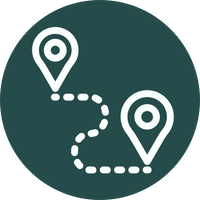
Point A - B Travel Time Estimator
Get an idea of just how long you can expect to travel from home to your dream destination including multiple travel modes
Use Time EstimatorCo2 Calculator
Do your own travel impact calculations using our multiple Co2 calculators.
Measure Your Co2Tour FAQ's
What are the overnights like—are gers comfortable?
Gers are simple and communal. Expect twin beds with linens/extra blankets, shared bathroom blocks, and limited hot water. The 2-night nomad family stay or tent camping is very basic with no fixed facilities.
Is there electricity and phone coverage in camps?
Most ger camps have mains power (some cut electricity overnight). Coverage is patchy once outside towns. Bring a headlamp and power bank; charge whenever you can.
How cold can it get—what should I pack for the weather?
The Gobi swings from warm days to cold nights, and Yolyn Am can feel icy even in summer. Layering is key: pack a warm jacket, beanie, gloves, and a wind/waterproof shell.
Are meals included and can dietaries be accommodated?
13 breakfasts, 11 lunches, 10 dinners are included. Vegetarians and common dietaries are usually possible with advance notice, but choice is limited in remote areas—carry favourite snacks.
More FAQ's
What’s the group size and who leads the trip?
A small group (max 14, avg ~12) with a CEO (Chief Experience Officer) throughout. Specialist local guides join where they add value.
What transport do we use—are roads rough?
Primarily private vans/4×4, plus walking. Roads can be bumpy and dusty—a neck pillow and buff make long drives more comfortable.
Can I get a single room—how does rooming work?
Trips are priced for shared accommodation; solo travellers are paired by gender. A single supplement (“My Own Room”) may be available in select hotels only—not in gers or at the nomad stay/camping.
Are arrival/departure transfers included?
Not by default. Pre-bookable airport transfers are available; otherwise taxis/rideshare to the joining hotel work fine.
Do I need a visa or special documents?
Passport with 6+ months’ validity is required. Visa rules vary by nationality—check official guidance well before travel. Carry copies of passport, insurance, and visa/vax proofs.
How much cash should I carry and what currency is used?
Local currency is MNT (tugrik). ATMs exist in cities; cash is essential in rural areas. Clean USD notes are widely useful. Split funds between cards + cash and keep a backup card.
What’s the tipping etiquette?
Tipping is customary. Typical guidance: USD $3–5 pp/day for drivers/local guides; a CEO tip at trip’s end is appreciated at your discretion.
What optional activities are popular?
City touring in Ulaanbaatar, camel rides near Khongoryn Els, and cultural shows (when available). Your CEO will outline options and costs on the ground.
Any cultural etiquette I should know for gers and monasteries?
In gers, move clockwise, don’t lean on central poles, and accept offered tea with thanks. Dress modestly at monasteries (shoulders/knees covered), and ask before photographing people.
How do you handle safety out there?
Your CEO monitors conditions and may adjust the plan if needed. Keep valuables minimal, use luggage locks, and follow guidance on wildlife, weather, and road conditions.
Can I do laundry en route?
Occasional hotel laundry is possible for a fee; otherwise hand-wash with biodegradable detergent and line-dry on drive days.
What should I absolutely not forget?
Headlamp, warm layers, sturdy walking shoes, buff/face cover for dust, power bank, reusable bottle, and personal meds/first-aid. A sense of humour also travels well across the steppe.
- 0 – 2t | Low
- 2 – 4t | Moderate
- 4 – 6t | High
- 6 – 8t | Very High
- 8t+ | Extreme
(T = tonnes CO₂e)
Still Searching? Check these out…
BOOKING & PAYMENT FAQ's
What’s the deposit & payment process?

Choose Tour
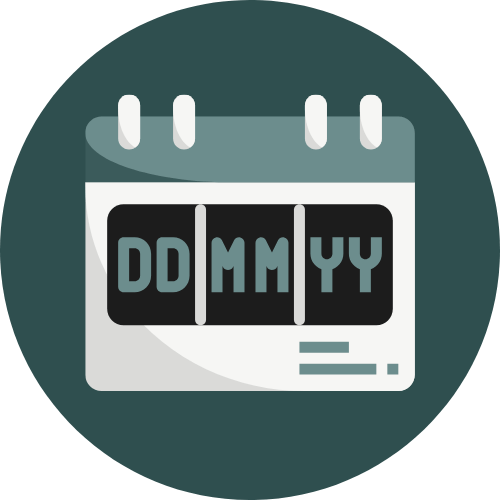
Pick Dates
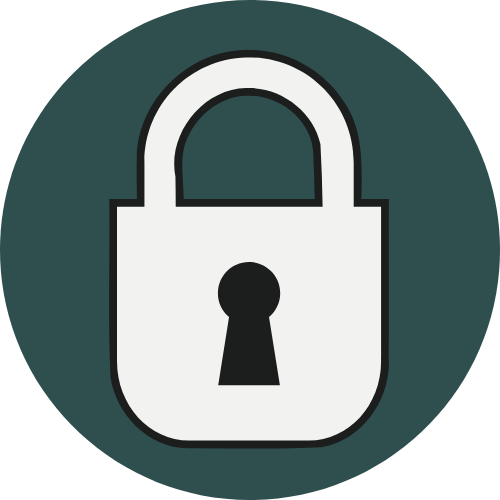
Reserve Spot
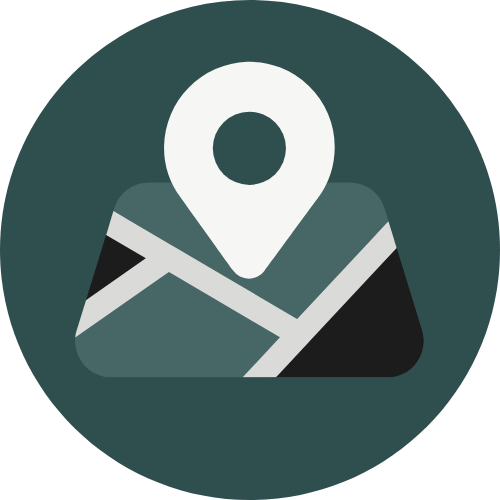
Sort Logistics

Adventure Time!
Here’s how it works—clean, simple, no surprises:
A) "Book with Deposit"
- Place a deposit. You’ll pay the deposit at checkout.
- Tell us the details. You’ll receive an email asking for your tour name/date, passenger details, and any special requests (room type, extras, dietaries, etc.).
- We secure your spots. If everything’s clear, we confirm your booking by email so you can lock flights and plan the rest.
- If we need anything (e.g., room configuration, add-on activities), we’ll ask—then issue confirmation once sorted.
- Final balance invoice. After confirmation, you’ll be invoiced the remainder in line with the trips booking terms & conditions (each trip/partner has its own timeline but full payment is generally required at least 30 days prior to departure).
- If we are unable to confirm your spot: you’ll receive a full refund of your deposit. Zero stress.
B) Instant confirmation route (selected trips)
- Some departures use live operator booking calendars. These can deliver instant confirmation inside the operator’s system.
- If you book this way, the operator’s terms & conditions apply immediately (including payment schedules and change/cancellation rules).
Good to know
- Each trip may have slightly different deadlines and deposit rules—You can find the terms and conditions for your chosen booking on the listing page.
- You can still flag special requests after deposit—earlier is better for availability.
What’s your cancellation & refund policy?
Before your booking is confirmed
- If we can’t confirm your spots after you’ve paid a deposit, we’ll issue a full refund of that deposit.
After your booking is confirmed
- Cancellations follow the operator’s cancellation schedule (varies by trip and how close you are to departure).
- Expect possible fees or non-refundable items (e.g., internal flights, permits, certain accommodations).
- If a refund or credit is due, we’ll process it once the operator releases the funds and pass it back to your original payment method.
Instant-confirmation bookings (live operator calendars)
- The operator’s T&Cs apply immediately on these. Some departures are non-refundable or have stricter windows.
How to cancel
- Email us your booking reference, names on the booking, and a one-line request (“Please cancel”).
- We’ll reply with the exact penalties/refund or credit per your operator before proceeding.
If the operator cancels or significantly changes your trip
- You’ll be offered an alternative date, a travel credit, or a refund according to that operator’s policy. We’ll advocate for the best outcome for you.
Good to know
- Refunds are returned to the original payment method; bank/FX fees aren’t usually recoverable.
- Travel insurance is your friend for recovering non-refundable costs.
- The earlier you contact us, the better your options typically are.
Can I change dates or transfer my booking?
Short answer: Usually yes, but it depends on the operator’s rules and how close you are to departure.
Date changes
- We’ll check new-date availability with the operator.
- If a change is possible, you’ll pay any applicable operator change fee plus any price difference for the new date.
- The closer to departure, the tighter (and costlier) changes become; some trips treat late changes as a cancel + rebook under the operator’s policy.
Transfer to another person (name change)
- Many operators allow a name change/transfer up to a certain cut-off.
- Fees and deadlines vary by operator and services booked (e.g., flights may be non-transferable).
Instant-confirmation bookings
- If you booked via a live operator calendar, the operator’s T&Cs apply immediately. Some departures are non-changeable or have stricter windows.
How to request a change
- Email us with your booking reference, preferred new date/person’s details, and any flexibility.
- We’ll confirm options, fees, and any price differences before making changes.
Pro tips
- Ask early—more seats = more options, lower fees.
- Consider travel insurance that covers change/cancellation costs.
- Always check booking terms and conditions, links displayed on each tour page under the overview.
Are you accredited / is my money protected?
Yes. Your money is protected by our own accreditation and safeguards, plus the protections of our tour partners and the payment methods we use.
Our business safeguards
- Legally registered business with documented booking & refund policies.
- Commercial insurance appropriate to our operations.
- VTIC Quality Tourism Accreditation (Quality Tourism Accredited Business) confirming we meet industry standards for customer service, safety, and risk management.
Operator-level protection
- We partner only with established operators who maintain their own financial protections and clear refund/credit policies.
- When you book via a live operator calendar, payment is processed directly by the operator and their protections/terms apply immediately.
How your payment is handled
- All card payments run through a secure, PCI-compliant gateway; we don’t store your full card details.
- If you book through a live operator calendar, payment is processed directly into the operator’s system, and their terms & protections apply immediately.
Your legal rights
- Your purchase is also covered by consumer laws in your country/state (fair trading/refund rights). We reference the applicable jurisdiction on your paperwork.
Extra peace of mind
- Paying by credit card may add chargeback protection from your card issuer.
- We strongly recommend travel insurance to cover situations outside operator/consumer protections (your own cancellation, medical, delays).
Do you offer price matching?
Absolutely. Our prices update live from the operator, but if you spot the same tour on the same dates with the same inclusions and terms advertised for less — even in a public sale or promo — we’ll match it.
Already booked? We’ll refund the difference to your original payment method (eligibility applies, based on the final checkout price including taxes/fees from an authorised seller). And yes, the matched price still includes our 200% carbon offset — no dilution of benefits.
Do I need travel insurance?
Not for every trip—but for most travellers, we strongly recommend it
Some itineraries and partner operators do require insurance (especially remote treks, glacier walks, or bookings made via live operator calendars with mandatory cover).
When it’s required
- Certain partners/departures make insurance compulsory and may ask for proof before departure. If you book one of these, their T&Cs apply immediately.
What good cover includes
- Medical treatment & emergency evacuation/repatriation (high limits).
- Trip cancellation/interruption (protects your deposit and balance if plans change).
- Baggage & travel delay, and supplier default where available.
- Coverage for all activities on your itinerary (e.g., trekking, glacier hikes, kayaking) and any relevant altitudes/conditions.
- 24/7 assistance hotline and a clear claims process.
When to buy
- At booking. That way, cancellation benefits start immediately and you’re covered if something crops up before you travel.
How to share proof
- Email us your policy certificate (names, policy number, assistance phone).
- If you booked via an instant-confirmation operator calendar, follow their proof instructions and deadlines exactly.
Are departures guaranteed?
Most departures run as planned, but guarantees depend on the operator and minimum numbers. If there’s a wobble, we’ll tell you fast and give you options.
How it works
- Minimum group size: Most partners need a minimum number of travellers to confirm a trip.
- When we confirm: Each operator has a confirmation window (often 30–60 days before departure). We monitor load and update you as status changes.
- Any listing from "G-Adventures" will be guaranteed to run with a booking
If a trip is under-subscribed
- We’ll contact you with clear options:
Move to another date (same tour)
Switch to a comparable trip
Full refund of monies paid (per the operator’s terms)
- Any price differences for new dates/trips will be discussed before you decide.
If a trip is suspended (weather, park closures, strikes, force majeure)
- First, we’ll look to re-route or adjust (e.g., alternative park, similar activities).
- If that’s not viable, you can move dates, choose a different trip, or receive a refund/credit according to the operator’s policy.
Our promise
- Proactive comms: We’ll keep you posted as soon as we know more—no last-minute surprises if we can help it.
- No pressure choices: You pick the outcome; we handle the admin.
- Flight advice: Until your tour is confirmed, book flexible/refundable flights or add insurance that covers schedule changes.



